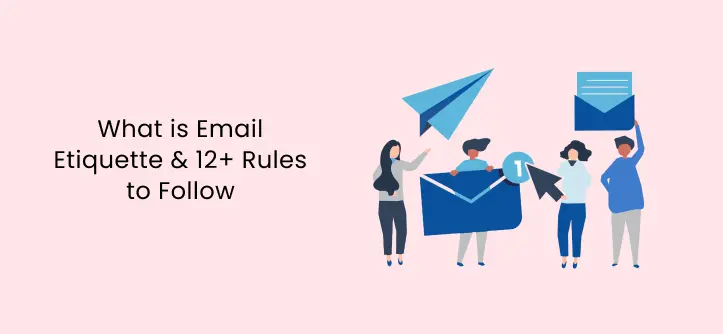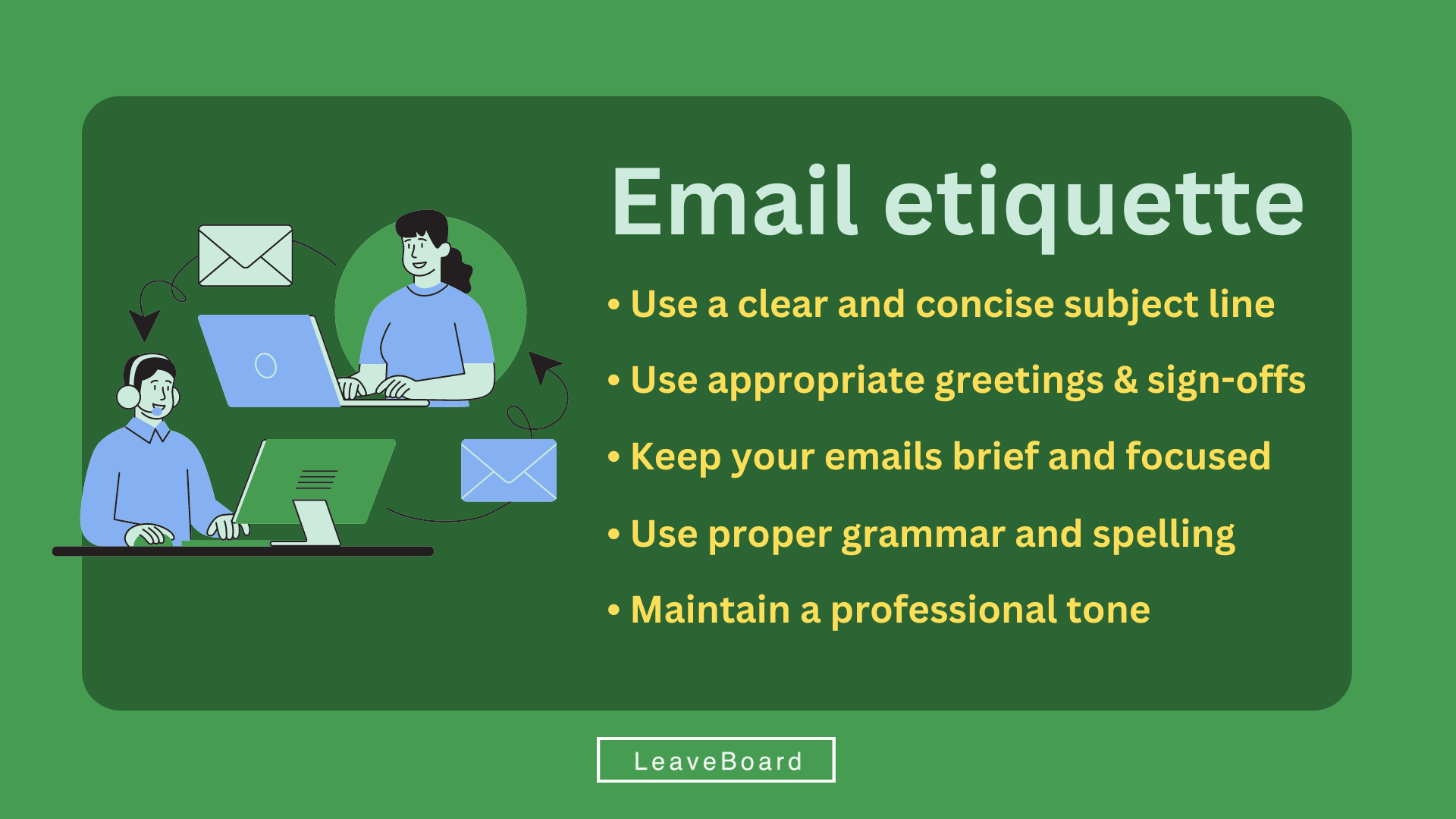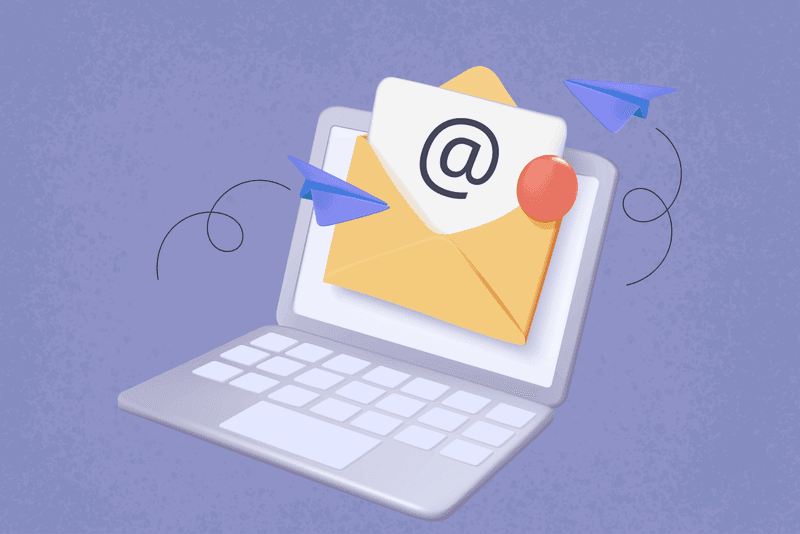Clear communication in business is crucial. Email is a key tool for this.
Business email etiquette ensures your message is professional and understood. Missteps can lead to confusion or misunderstandings. Knowing the correct practices can make a difference. Good email etiquette helps build relationships and keeps interactions smooth. In this blog, we will explore the essential practices for business email etiquette.
By following these guidelines, you can ensure your emails are effective and polished. Let’s dive in and discover what makes a business email appropriate and professional.
Clear Subject Lines
Clear subject lines play a vital role in business email etiquette. They set the tone of the email and let the recipient know what to expect. A concise subject line can grab attention and provide clarity. It helps ensure that your email gets noticed and read.
Importance Of Clarity
Clarity in subject lines helps recipients understand the email’s purpose quickly. Clear subject lines save time by letting the reader know the email’s main point. This leads to faster responses and better communication. Vague subject lines can confuse and may lead to the email being ignored.
Examples Of Effective Subject Lines
Effective subject lines are short and to the point. Examples include “Meeting Rescheduled to 3 PM,” “Project Update: Phase 2 Completed,” and “Invoice #12345 Due by Friday.” These examples provide immediate context. They tell the recipient what to expect without needing to open the email. A well-crafted subject line can make a big difference.

Credit: www.poptin.com
Professional Salutations
Professional salutations set the tone for your business email. A well-chosen greeting can make your email appear respectful and polished. This section will guide you on choosing the right greeting and avoiding common mistakes.
Choosing The Right Greeting
Start your email with a proper greeting. Use “Dear” followed by the recipient’s title and last name. For example, “Dear Mr. Smith.” This shows respect and professionalism. If you know the person well, you can use their first name, like “Dear John.”
In a less formal setting, “Hi” or “Hello” followed by the recipient’s name works. For instance, “Hi Jane.” Make sure the greeting fits the relationship and context. Always address the recipient by their name to show courtesy.
Common Mistakes To Avoid
Avoid using overly casual greetings such as “Hey” or “What’s up.” These can seem unprofessional. Never use slang or text speak in business emails. This can make you appear unprofessional.
Do not forget to include a greeting. Starting an email without one can come off as rude. Also, ensure the recipient’s name is spelled correctly. Misspelling names shows a lack of attention to detail.
Concise And Relevant Content
Crafting concise and relevant content is key to effective business email etiquette. Ensure clarity by sticking to the main point and avoiding unnecessary details. This practice enhances readability and maintains professionalism.
Writing concise and relevant content in business emails is a key practice that ensures your message is effectively communicated and well-received. In today’s fast-paced world, people value their time and appreciate when others respect it by getting straight to the point. Crafting emails that are brief and on-topic not only displays professionalism but also increases the likelihood of a timely response.
###
Keeping Emails Brief
Short emails save time for both the sender and the receiver. When you keep your emails brief, you make it easier for the recipient to quickly understand your message and respond.
Avoid lengthy introductions and get straight to the matter at hand. If you can convey your message in three sentences, don’t use four.
Use bullet points or numbered lists for clarity. This helps the reader scan through your email quickly and grasp the key points without wading through paragraphs of text.
###
Staying On Topic
Stick to one subject per email. Mixing multiple topics in a single email can be confusing and reduces the chances of getting a clear response.
If you need to address more than one issue, consider sending separate emails for each topic. This keeps the conversation organized and ensures each subject receives the attention it deserves.
Avoid unnecessary details. Share only the information that is relevant to the matter being discussed. This keeps your email focused and easier to respond to.
Imagine receiving an email that rambles on without a clear point. You might feel frustrated or even ignore it altogether. By staying on topic, you show respect for the recipient’s time and increase the effectiveness of your communication.
Have you ever received a cluttered email that left you scratching your head? How did it make you feel? Aim to write emails that you’d appreciate receiving yourself.
Proper Use Of Cc And Bcc
Proper use of CC and BCC in business emails is crucial. It keeps your communication clear and professional. Misusing CC or BCC can lead to confusion or even breaches of privacy. Understanding the right way to use them helps maintain etiquette in your emails.
When To Use Cc
CC stands for “carbon copy.” Use it to include someone in the loop. The person in the CC field will receive a copy of the email. They do not need to respond. It’s best used for keeping others informed. For example, CC a supervisor to keep them updated.
Do not overuse CC. Only add people who need to see the email. Too many CCs can clutter inboxes. It can also dilute the main message. Keep your CC list short and relevant.
Appropriate Use Of Bcc
BCC stands for “blind carbon copy.” Use it to send an email to multiple people without revealing their addresses. This keeps the recipients’ email addresses private. It’s useful for sending newsletters or announcements. Each recipient sees only their own email address in the “To” field.
Do not use BCC to hide conversations. This can seem sneaky or untrustworthy. Use BCC only for large groups or for privacy reasons. Ensure that the content is suitable for all recipients.
Polite And Respectful Tone
Using a polite and respectful tone in business emails is crucial. It helps in building positive relationships. It also ensures clear communication. A polite email can prevent misunderstandings. It shows professionalism. It reflects well on the sender and the company.
Avoiding Aggressive Language
Always use calm and composed language. Avoid using harsh words. Aggressive language can seem rude. It may offend the recipient. This can damage business relationships. Instead, use neutral words. This ensures your message is clear without being offensive.
Using Please And Thank You
Politeness is key in business emails. Use “please” when making requests. It shows respect. It makes the request sound courteous. Always express gratitude. “Thank you” shows appreciation. It acknowledges the recipient’s efforts. It creates a positive impression. Simple phrases can make a big difference.

Credit: www.youtube.com
Proofreading Before Sending
Proofreading before sending an email ensures professionalism and clarity. It helps catch errors and improves the overall tone of the message. Always review your email to maintain proper business etiquette.
Proofreading Before Sending
Proofreading your business email before hitting send is a crucial step that can save you from potential embarrassment and miscommunication. It’s easy to overlook errors when you’re in a hurry, but taking a few minutes to review your message can make a significant difference. Let’s dive into the importance of checking for typos and ensuring correct information.
Checking For Typos
Typos can change the meaning of your message and make you appear unprofessional. Imagine you’re emailing a client about a project deadline and accidentally type “presents” instead of “presence.” That simple typo could lead to confusion.
Use spell check tools available in your email client. However, don’t rely solely on them. Your eyes are the best judge.
Reading your email out loud can help catch errors you might miss when reading silently. It’s a simple trick that works wonders.
Ensuring Correct Information
Accuracy is key in business communication. Incorrect information can lead to misunderstandings and errors. Double-check dates, names, and figures before sending your email.
If you’re sending attachments, make sure they’re the correct ones. It’s embarrassing to send the wrong file or forget to attach them altogether.
Consider this: Would you want to receive an email with incorrect details? Probably not. Your recipients feel the same way.
Always ask yourself, “Is everything in this email accurate?” before hitting send. This simple question can help ensure you’re providing the right information.
Proofreading might seem time-consuming, but it’s a small investment for maintaining your professionalism and clarity in communication.
Timely Responses
In the world of business communication, responding promptly to emails is crucial. Timely responses show respect for the sender’s time and foster trust. They also ensure smooth workflow and decision-making.
Setting Response Expectations
Clearly set response expectations. Inform your contacts about your typical response time. This helps manage their expectations. For example, state that you reply within 24 hours. This transparency builds trust and reduces follow-up emails.
Use out-of-office replies. When unavailable, let senders know when to expect a response. This simple practice prevents misunderstandings and keeps communication clear.
Managing Delayed Replies
Sometimes, delays happen. Notify the sender if you need more time. A quick note explaining the delay shows you respect their time. It also reassures them that their email is important.
Provide a new timeline for your response. This helps the sender plan accordingly. Even a brief update can maintain trust and keep the conversation on track.
Use these strategies to ensure your business emails are timely and respectful. They will enhance your professional relationships and improve overall communication.
Proper Signature Blocks
Proper signature blocks in business emails enhance professionalism and clarity. They provide essential contact details and leave a lasting impression. Focusing on the right elements ensures your signature is both effective and appropriate.
Including Contact Information
A good signature block includes essential contact information. Start with your full name and job title. This helps recipients understand your position. Add your company name to reinforce your affiliation.
Include your phone number and email address. These details make it easy for recipients to reach you. If relevant, add your company website. This provides additional context and resources.
Designing A Professional Signature
A professional signature design is crucial. Keep it simple and clean. Avoid using too many colors or fonts. Stick to one or two colors that match your company brand. Use a legible font size and style.
Include a logo if appropriate. Ensure it is small and does not overshadow the text. Avoid using large images or graphics. They can make your email look cluttered.
Consider adding social media links. These can enhance your digital presence. Use small icons to keep the design neat. Ensure the icons link directly to your professional profiles.

Credit: leaveboard.com
Frequently Asked Questions
Which Of The Following Are Good Practices To Follow Regarding Business Email Etiquette?
Good practices for business email etiquette include using clear subject lines, keeping messages concise, proofreading for errors, being polite and professional, and responding promptly.
What Are The 5 Aspects Of Email Etiquette?
The 5 aspects of email etiquette include using a clear subject line, greeting the recipient properly, being concise, proofreading for errors, and ending with a polite closing.
Which Of The Following Is Appropriate In A Business Email?
Use a polite tone, clear subject line, and proper greetings. Ensure correct grammar and concise sentences. Avoid slang and excessive jargon.
Which Of The Following Is Recommended Regarding E-mail Etiquette?
Use clear subject lines, address the recipient politely, keep messages concise, proofread before sending, and avoid using all caps or excessive punctuation.
Conclusion
Practicing good business email etiquette is essential. Clear, concise messages show professionalism. Always check for typos and errors. Use a polite tone and respect others’ time. Respond promptly to maintain trust and efficiency. Including these habits improves communication. Strong email etiquette fosters better relationships and success in business.
Simple steps make a big difference.
